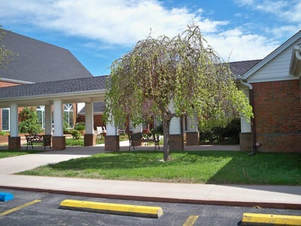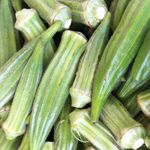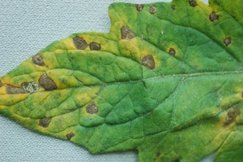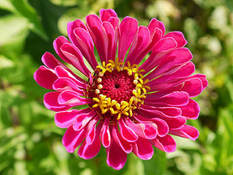|
Ozark Green Thumb BCMG Monthly e-Newsletter |
|
|
 The Baxter County Master Gardeners are a fun group of folks who enjoy sharing their love of gardening with any visitor. At our meetings we have speakers, refreshments, & fun. Come join us! Next Meeting Date: August 9th from 1:00 - 3:00 pm Meeting Place: The First Presbyterian Church 1106 Spring Street Mountain Home, AR August Speakers: Linda Glass, "Using Native Plants for a Butterfly-friendly Yard"Linda learned to appreciate the natural world and develop an interest in and a love for wildflowers because of her mother, Wanda Glass. Since retirement, she has had more time to study and learn about the importance of native plants to other living things. She is a member of Buffalo National River Partners, Friends of Baker Prairie, and North Central Arkansas Master Naturalists. Janice Rose, Horticulture Table: "Tips for Fair Entries" Master Gardeners Monthly Radio Program: Mountain Talk Radio July 18th on 97.1 7:15 a.m. - 8:am. Master Gardener Hosts this month are Tommy Hagan and Ceil Gasiecki Directions: From Mountain Home Take US Hwy. 62B East through Mountain Home until you come to Cardinal Street. Cardinal Street is the intersection just past Harp's Grocery. Turn right onto Cardinal Street and travel South until you come to the first stop sign which should be Spring Street. Turn left onto Spring Street and go down the hill past the bridge and the First Presbyterian Church will be on your right hand side. From Gassville: Take Hwy. 62/412 towards Mountain Home. Once you get to Mountain Home continue on into Mountain Home on US 62B. This will take you through town till you get to Harp's Grocery and you come to Cardinal Street. Cardinal Street is the intersection just past Harp's Grocery. Turn right onto Cardinal Street and travel South until you come to the first stop sign which should be Spring Street. Turn left onto Spring Street and go down the hill past the bridge and the First Presbyterian Church will be on your right hand side.
0 Comments
In this weeks article I want to mention things gardeners need to be considering for July. The following is a garden checklist:
For more information on any of the above topics, please feel free to contact the University of Arkansas Division Of Agriculture Cooperative Extension Service at 425-2335.  Another casualty in the homogenization of American culture is the loss of our strong regional identity with food. Food used to be grown in the garden and then taken directly to the kitchen. But today, few young families have the time or space for a garden, and even home cooked meals are becoming endangered. Will the next generation even know of traditional southern food? Okra is in high season now, so let's look at how it became a part of our cultural heritage. Okra (Hibiscus esculentus) is a fast growing, heat-loving tropical annual found in the wild along the White Nile, which drains the southwestern highlands of Ethiopia. It's usually unbranched with the trunk reaching 6 to 10 feet tall by the end of the season. Leaves are coarse, palmately-veined and covered with a fine bristly pubescence that many find irritating to their skin. Flowers are cream colored and have the general shape and form of a hibiscus blossom except they do not splay out flat. Like other hibiscus blossoms, they remain open only one day. Some okra selections show a definite photo-period response and produce most of their flowers in late summer as the days begin to get shorter. Okra pods are variable, ranging from the typical kinds to short and fat types built on the model of a Cuban cigar to skinny, foot-long, five-sided affairs. While most are green, some have red-pigmented pods. Regardless of the shape or color, okra pods mature quickly. Depending on temperature, they must be picked within four or five days of blooming. After that, the walls of the pod quickly lignify and they become inedible. Okra is the quintessential southern food, but its origins are a bit murky. It seems to have spread out of Africa to the Middle East and to India by the time of Christ. It was first reported in the New World in Brazil in 1658, probably originating in Africa with early slave trade. Its entry into the United States seems to be in doubt. The most logical and plausible explanation, at least to me, is that it came with the early slaves from western Africa. Okra is thought to be a corruption of "nkru-ma," a name used by the Asante people (tribes from modern day Ghana) for the plant. Some food historians want to give the French-Creoles credit for popularizing the vegetable, known to them as "gumbo." But the name gumbo - a common name used for okra in parts of the Gulf Coast - is also taken from a Bantu word "kigombo," so the Creoles almost certainly learned of the vegetable from slaves. The origin of our southern cuisine is a point of contention amongst scholars who study such things. Attempts to assign provenance to many southern food traditions is sure to cause a heated debate. Written records are scarce, and those that do exist, favor the white slave owners. But this can hardly be considered convincing evidence for slave owners forbid slaves from learning to read and write. Okra is an easy vegetable to grow in any average garden soil. It flowers over a long period, and, as long as the pods continue to be picked, it will keep flowering until the days begin to cool off in the fall. Because it's self-pollinated, seeds can be saved from late season pods. By: Gerald Klingaman, retired
Extension Horticulturist - Ornamentals Extension News - September 2, 2005  A tasty side dish when you barbecue. Tastes a bit like French onion soup.
Cut off top of onion. Peel paper skin from onion, leaving root intact.
Core onion, being careful not to cut into root Place each onion on a square of heavy-duty foil. Place a bouillon cube in the center of each onion. Drizzle with olive oil and place a teaspoon of butter in center of each onion. Wrap onions and grill on very hot gas or charcoal grill 35 to 40 minutes. Makes 4 servings Note: It's best to serve each onion in individual bowl because the onions will produce a lot of broth.  Septoria leaf spot is caused by a fungus, Septoria lycopersici. It is one of the most destructive diseases of tomato foliage and is particularly severe in areas where wet, humid weather persists for extended periods. Septoria leaf spot usually appears on the lower leaves after the first fruit sets. Spots are circular, about 1/16 to 1/4 inch in diameter with dark brown margins and tan to gray centers with small black fruiting structures. Characteristically, there are many spots per leaf. This disease spreads upwards from oldest to youngest growth. If leaf lesions are numerous, the leaves turn slightly yellow, then brown, and then wither. Fruit infection is rare. The fungus overwinters on infected tomato debris or on weeds in the nightshade family, the same family to which tomatoes belong. The fungus can also survive on equipment such as plant stakes and cages. Long periods of high relative humidity, temperatures of 60–80 degrees F, and leaf wetness are ideal conditions for development and spread of the pathogen. Integrated Pest Management Strategies 1. Remove diseased leaves. If caught early, the lower infected leaves can be removed and burned or destroyed. However, removing leaves above where fruit has formed will weaken the plant and expose fruit to sunscald. At the end of the season, collect all foliage from infected plants and dispose of or bury. Do not compost diseased plants. 2. Improve air circulation around the plants. If the plants can still be handled without breaking them, stake or cage the plants to raise them off the ground and promote faster drying of the foliage. 3. Mulch around the base of the plants. Mulching will reduce splashing soil, which may contain fungal spores associated with debris. Apply mulch after the soil has warmed. 4. Do not use overhead watering. Overhead watering facilitates infection and spreads the disease. Use a soaker hose at the base of the plant to keep the foliage dry. Water early in the day. 5. Control weeds. Nightshade and horsenettle are frequently hosts of Septoria leaf spot and should be eradicated around the garden site. 6. Use crop rotation. Next year do not plant tomatoes back in the same location where diseased tomatoes grew. Wait 1–2 years before replanting tomatoes in these areas. 7. Use fungicidal sprays. If the above measures do not control the disease, you may want to use fungicidal sprays. Fungicides will not cure infected leaves, but they will protect new leaves from becoming infected. Apply at 7 to 10 day intervals throughout the season. Apply chlorothalonil, maneb, macozeb, or a copper-based fungicide, such as Bordeaux mixture, copper hydroxide, copper sulfate, or copper oxychloride sulfate. Follow harvest restrictions listed on the pesticide label. Source: Missouri Botanical Garden
Image: https://www.uaex.edu/farm-ranch/pest-management/plant-disease/tomatoes.aspx  EVERYTHING OLD IS NEW AGAIN – Zinnias are old-fashioned flowers that are continually being reinvented by breeders and rediscovered by gardeners.Everything old is new again. Nowhere is this truer than in fashion, especially the fashion of flowers. The length of the cycle of popularity may vary, but garden favorites always come back. Take the common zinnia, named the 2000 plant of the year by the National Garden Bureau. It has come and gone in popularity so regularly people have lost track of its true origins. Zinnia elegans is native to Mexico and is the most popular of the 20 species of zinnias known to science. It is an annual herb in the daisy family growing from 18 inches to more than 3 feet tall. Plants are stout-stemmed, freely branched and bush like in habit if given enough room. At least 15 shades of flower colors are described with this species, which is especially rich in shades of purple and orange. Variegated forms have bred true from seed since at least the 1880s. True blues and scarlet reds are lacking. Flower heads are terminal, and in the typical form, contain one or two rows of ray flowers surrounding a central eye of disc florets. Breeding has changed flower sizes dramatically. Heads range from an inch across to giants 4 to 5 inches across. Doubled forms with as many as 15 stacked rows or ray florets are available causing the blossom to elongate significantly. The common or elegant zinnia (Z. elegans) was introduced into cultivation by Casimiro Gomez de Ortega (1740-1818), the Spanish botanist responsible for establishing the botanical garden in Madrid. In 1796 he provided seeds to the wife of the English ambassador to Madrid who just happened to be the daughter-in-law of John Stuart Bute, the director of the Royal Botanic Gardens at Kew. Most common day garden flowers were developed between 1820 and 1860 by gardeners on French, Flemish and English estates. These discoveries quickly made their way into the emerging flower seed industry that was developing as the middle class expanded during the Industrial Revolution. Double zinnias, the trait that moved them from ho-hum to instant hits, had their debut when M. Grazau in Bagneres, France, found a reproducing double form in a seed lot he had received from the West Indies. Two years later it was introduced to the trade by the Vilmorin firm. But it was not to last. By 1880, zinnias had been hung with the title of "old-fashioned" and they began to fade from popularity. In my 1888 Burpee Seed Catalog, I find most of the types listed today plus a double-flowered, red and white variegated cultivar that won a "First Class Certificate" from the Royal Horticulture Society in London. But the decline of zinnias had begun. They continued to lose favor until the "Giant Dahlia" and "Mammoth" strains, produced by California breeder John Bodger, appeared in the early 1920s. Burpee's hybrids during the 1950s saw another revival in interest. Today it is Sakata, a Japanese firm that made hybrids between the old-fashioned zinnia and Z. angustifolia to create the Profusion Series that has revived interest in the old favorites. Zinnias are easy to grow from seed and will produce their first flower six weeks after sowing, provided the temperature is warm enough. Plants are offered in pots and packs, but try to plant them before they begin to bloom. If blooms are present, cut the plant back ruthlessly to get them to branch and send up new flower stems. They are best grown in bright locations with a fertile, well-watered soil. Zinnias respond well to cutting, so remove as many cut flowers as possible to keep the plant sending up new flowers.
Leaf diseases, especially alternaria leafspot, are a problem with most clones of Zinnia elegans. To avoid the problem rotate zinnia beds from year to year, buy seed from a reputable source and give the plants plenty of air circulation to keep the foliage dry. The Profusion zinnias are resistant to this disease. By: Gerald Klingaman, retired Extension Horticulturist - Ornamentals Extension News - August 24, 2007  In pre-Columbian Mexico the tomatillo was most likely consumed in greater quantities than red tomatoes. Although often mistaken for green tomatoes tomatillos are actually members of the same botanical family as gooseberries and not related to the tomato.
Instructions: Pour the oil in a non-stick saucepan and saute the onion and garlic for 3 to 4 minutes, Add the tomatillos, chilis and water and cook over low heat for 10 minutes. Remove from heat and let cool, then stir in the cilantro, salt and pepper. Chill in refrigerator for at least an hour before serving. Makes approximately 2 cups. Source: Authentic Southwestern Cooking by Lynn Nusom
|
Archives
April 2022
|
|
